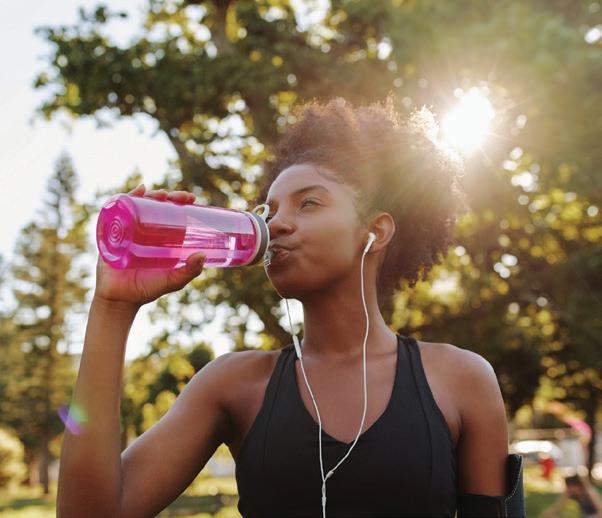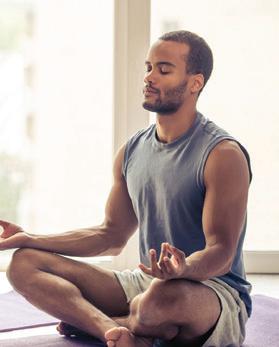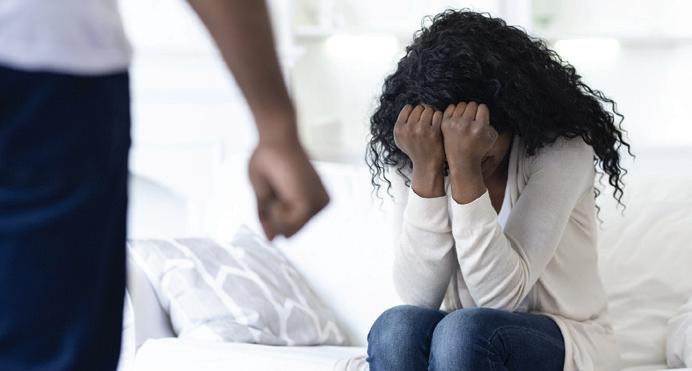
5 minute read
Health & Wellness – Young Black adults vulnerable to hypertension
YOUNG BLACK ADULTS VULNERABLE TO HYPERTENSION
About 1 in 4 young adults has high blood pressure. But few are getting treated, with new research concluding Black young adults are especially vulnerable. In a study that included 15,171 Black, Mexican American and white adults, researchers found that nearly 31 percent of Black young adults had high blood pressure, also known as hypertension. It was the highest rate among the three groups studied and presented the American Heart Association’s Scientific Sessions conference.
Many adults with high blood pressure remain undiagnosed, while others who have been diagnosed do not have their disease properly controlled. The study reported when young adults have high blood pressure that is not controlled, they begin accumulating cardiovascular risk at a very young age. This, in turn, puts them at risk for having a heart attack or stroke at an early age. Experts went on to report that “Black young adults have higher awareness and higher treatment rates than the other groups, however, control rates of their disease are poorer than what is seen in middle-aged and older adults. Social factors and biology might both play a part in these disparities.
Previous studies have found high blood pressure is more common among Black adults than adults of other races. The new study sheds light on how early this disparity begins. Risk factors for high blood pressure include not getting enough exercise, an unhealthy diet, being overweight or obese, drinking too much alcohol, high cholesterol, smoking and diabetes.
BlackHealthMatters.com

Stay Healthy During Retirement
Retirement is a crucial transitionary stage of life. Things can get overwhelming as you adjust to your new way of life. Leaving the workforce can come with many adjustments, including fewer social gatherings and the loss of many acquaintances. Your health could also be a reason for concern, especially since you might not be as active as you were before retirement. Being in good health gives you more opportunities to enjoy your retirement. An active lifestyle can improve your cognitive function, help in fighting off depression and anxiety, and slow down the progression of brain diseases, such as Alzheimer’s and Parkinson’s. Here are four valuable tips to help you stay fit, healthy, and happy during your retirement years.
1. FIND AN ACTIVITY THAT YOU ENJOY
The ways you choose to stay active after retirement may depend on your social network from your working years. Do you have frequent contact with people outside of work? Gym, sports, drawing classes, fishing? Find something that you can do together to maintain an active lifestyle after retirement.
2. WORKING OUT
Without a doubt, you need physical exercise to keep your body refreshed and stress-free. A sedentary lifestyle robs you of good rest. Working out has been shown to promote healthier sleeping patterns. Exercise also burns calories, which prevents heart disease, type 2 diabetes, and obesity. 3. MAINTAIN A HEALTHY DIET
Older adults are at an elevated risk of developing a life-threatening illness, so it’s vital to get an adequate supply of essential nutrients through food. Ideally, your diet should include lean protein, whole grains, low-fat dairy, vegetables, and fruit.
4. GET HEALTH INSURANCE
If you retire before you turn 65 years old, you can take out a health insurance policy to offer financial protection if you incur medical expenses to due age-related illnesses. Like physical wellness, financial wellness is also important. You should consider investing in longterm care coverage when getting close to retirement age because those who wait too long may no longer qualify if chronic health conditions arise in the meantime.
THE POWER OF YOGA
Maintaining a regular yoga practice can provide physical and mental health benefits. While there are more than 100 different types, or schools, of yoga, most sessions typically include breathing exercises, meditation, and assuming postures (sometimes called asana or poses) that stretch and flex various muscle groups. Because there are so several kinds of yoga practices, it is possible for anyone to start. Check with your doctor before beginning any exercise regimen. You may find yoga classes free online, in community centers, churches, or in fitness facilities.
PHYSICAL BENEFITS
• Relaxation • Increased flexibility • Increased muscle strength and tone • Improved respiration, energy and vitality • Maintaining a balanced metabolism • Weight reduction • Cardio and circulatory health • Improved athletic performance • Protection from injury
MENTAL BENEFITS
• Creates mental clarity and calmness • Increases body awareness • Relieves chronic stress patterns • Relaxes the mind • Centers attention • Sharpens concentration
American Osteopathic Association

Stop Human Trafficking
January 2023 is National Slavery and Human Trafficking Prevention Month, as decreed by presidential proclamation. January also is known as Human Trafficking Awareness Month. It is a key time for us all to educate ourselves about human trafficking and crucially to learn to spot the signs of trafficking. It is also a time for us take these messages to our workplaces, our churches, our schools, our representatives and everywhere else. To support the effort, activist group Hope For Justice suggests the single best action you can take is to learn how to spot the signs of trafficking. Below is what to look for. If you see suspicious activity, contact the authorities. • Houses or flats with too many people, all picked up or dropped off at the same time • People who seem scared, confused or have untreated injuries • Few or no documents, or someone else in control of their documents/passport • No control over their own post/mail, no phone or phone held by someone else • Low or no pay • One person speaking on behalf of many others, who may avoid eye contact or conversation • Lights on at workplaces at strange times — are people living there? • Someone who believes they are indebted to someone • Limited freedom of movement and dependency on others • Fear of police/authorities • Fear of a trafficker, believing their life or families’ lives are at risk if they escape or complain • Anxious and unwilling to tell others about their situation • Poor health, malnutrition or untreated dental conditions • Bruising; signs of other physical or psychological trauma including anxiety, confusion, memory loss • Less often, someone believing they are being controlled through witchcraft
Note: Those affected are unlikely to self-identify as a ‘victim’ and may not realize or accept they are being controlled









